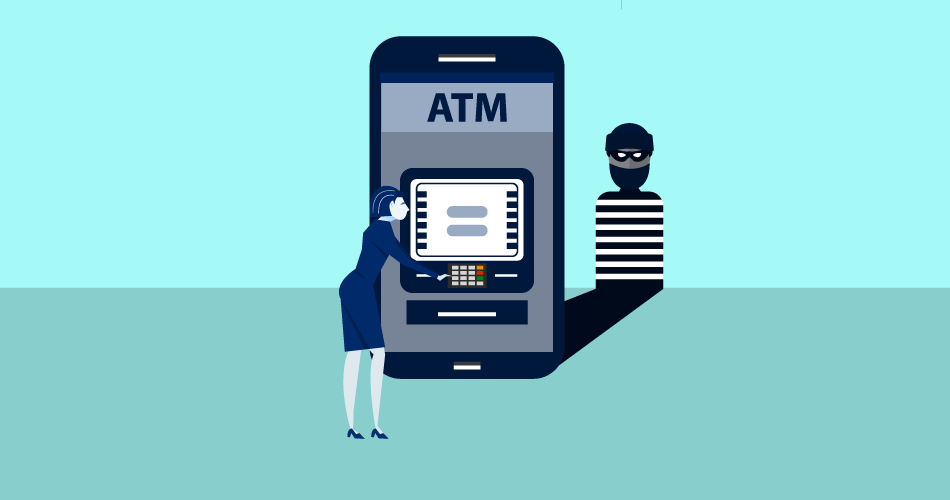Just like just about everything else, pickpockets have updated their techniques for the 21st century.
They no longer need to lift your wallet out of your pocket or purse, they can use your card’s very own signal to steal your information. Cards can even be skimmed by putting a fake reader on top of the actual one on bank machines.
Hackers have gotten very clever lately and it is more important than ever to keep your information safe.
In this article, we will go over some ways to protect yourself from identity theft and other fraud.
Credit card skimming
The amount of credit card fraud reported in the last few years is showing some shocking numbers. Up to 30% of consumers across the entire globe have been victims of credit card fraud over the last 5 years. (Source)
47% of those are in the United States alone.
Unfortunately, it is very easy for people to get your information and use it to their advantage.
RFID skimming is one such threat. Many don’t realize that your credit cards and even your passport are electronic documents and emit a signal that can be picked up with special readers. This RFID signal can be captured by these readers and then used to make another replica card which the thief can use to make purchases. At least until the fraud is discovered.
The way around this is to use an RFID blocker like Quick Card Wallet. These special wallets effectively block, or at least distort, the signal from your cards making them unreadable.
Skimmers can also be found on bank machines. Instead of trying to fish around for signals they can pick up, a reader is installed on the bank machine making it even easier to get your card information as well as your PIN.
Always pull on the reader where you insert the card. If it shows any sign of giving, even a slight wiggle, then don’t use that machine and alert the bank by calling the 800 number listed there.
Another popular way to get your card information is when you give your card to a waiter at a restaurant. There have been cases where the waiter has a card reader out of your sight where he takes the information. Then he is able to sell it or make up his own card with your credentials.
It may seem that it is safer to make purchases online than in person. That really isn’t the case, so make sure you are staying safe online with your information.
Making it more expensive for everybody
The problem with credit card fraud and skimming is how much it costs retailers and card issuers. That money is usually forgiven when it is proven to be fraudulent.
This means that the cost is passed on to consumers. Prices have to go up to cover their losses.
With losses of $22.8 billion in 2016 alone, it is clear how this is making things more expensive for everybody.
What can you do if your card is skimmed?
The best medicine is always prevention. Using an RFID blocker wallet and taking extra precautions goes a long way. But, you could still have your card information stolen. So, what do you do if this happens to you?
The first thing is to keep a close eye on your statements. You should be looking occasionally online even before your statement comes in the mail. Time is usually of the essence to stop more fraudulent transactions from happening.
If you see any activity that was not yours, contact your bank immediately. They will cancel your card and send out a new one which will make your skimmed card invalid and not able to make any other purchases.
There may have been a moment when looking back you think your card was skimmed. Maybe you got gas at a sketchy station where the attendant took the card out of your site, or the fraudulent purchases happened shortly after going to a restaurant, then contact the police and let them know. They may be able to track the person down and stop them from doing harm to others.
What the future holds
It seems like hackers are always one step ahead of the law and find ways to keep defrauding people after steps are taken for protection. In fact, a 2016 iovation/Aite Group study shows that it is estimated that fraud will rise by $10 billion by 2020.
What could slow that trend down is if more US card issuers start using chips instead of magnetic strips that are much harder to skim. If you have the option with your bank, ask them for a chip card.
